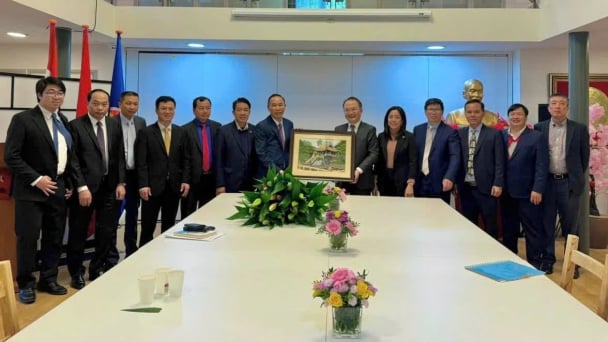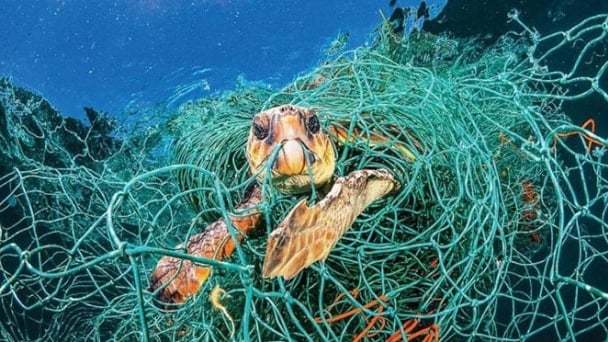June 16, 2025 | 04:58 GMT +7
June 16, 2025 | 04:58 GMT +7
Hotline: 0913.378.918
June 16, 2025 | 04:58 GMT +7
Hotline: 0913.378.918

Without female farmers, Asia's safe and sustainable food supply would not be guaranteed. Photo: TL.
In celebration of this year's International Women's Day, CropLife Asia has called on partners in the agriculture and food chains across Asia to join the #BreakTheBias campaign to spread the word and join hands to solve the gender disparities problems that still exist.
The inequalities that persist between women and men are an obstacle to agricultural and rural development and the goal of achieving a sustainable food system.
In a study supported by CropLife Asia and Kynetec (a leading market research company in agriculture and animal health) conducted in 2021, more than 65% of female farmers were from Southeast Asia's largest farming producing countries said they have experienced gender inequality in agriculture.
The highest percentage of farmers sharing this view came from Thailand (87%) and Indonesia (73%). Female farmers in Thailand and Indonesia also highlighted the main inequalities they face in lack of access to capital and production inputs.
In addition, farmers in Indonesia also are lack opportunities to access technology and training as another limitation of sexism.
These findings, along with others, are published in the 2021 ASEAN Farmer Sustainability and Resilience Study. This initiative seeks to understand the challenges farmers in the region face growing food production challenges. Kynetec surveyed 525 maize, rice, fruit, and vegetable farmers across Indonesia, the Philippines, Thailand, and Vietnam through this initiative.
Dr. Tan Siang Hee, Managing Director of CropLife Asia, said: "Without female farmers, Asia's safe and sustainable food supply would not be secure… Although female farmers play an essential role in the region's food systems, they are often at a disadvantage compared to their male counterparts in terms of access to resources, services, and opportunities. Ensuring that women farmers in our region are empowered and empowered to reach their full potential is the responsibility of all stakeholders in Asia's agricultural and food chains."
Southeast Asia has more than 100 million smallholder farmers, and the average agricultural sector accounts for about 26.7% of female workers in the ASEAN region. However, this proportion may be underestimating the contribution of women in agriculture as their work is not always fully documented in official statistics.
Although women are seen as the backbone of the rural economy, they receive only land, credit, advanced production inputs such as seeds and fertilizers, training programs, and information less than men.
One of the United Nations Sustainable Development Goals (SDGs) focuses is to ensure that no women are left behind, including women in the countryside, in agriculture.
Empowering and investing in female farmers has been shown to significantly increase productivity, reduce hunger and malnutrition, and improve rural livelihoods – not just for women but for all people. Due to culture, discrimination, and lack of recognition of roles in food production, women are often not trained in extension services and new plant varieties and technologies.
Most studies have found that productivity differences between men and women are not due to less skilled women but less access to inputs such as seeds, fertilizers, and improved farming tools. The yield gap between male and female farmers averages around 20-30%.
The implications of this productivity disparity would be enormous. If they were to be balanced, total agricultural output in the developing countries would increase by 2.5–4% and help reduce hunger for 100–150 million people.
Translated by Ha Phuc

(VAN) The working delegation from the Ministry of Agriculture and Environment conducted an important trip to the Netherlands to strengthen strategic partnerships and sustainable development in the agricultural sector.

(VAN) The letter ‘A Plea from the Ocean’ not only evokes emotion but also awakens the human conscience to the responsibility of protecting life on Earth.

(VAN) The Department of Agriculture in South Africa has announced the country’s first mass vaccination of poultry to prevent local birds from contracting avian influenza.

(VAN) Establishment of the Mekong Delta Regional Agricultural Linkage Center, aiming for a closed value chain, deep processing, trading platforms, and international market connectivity.

(VAN) Gia Lai province has recently recorded 460 rare species of animals and plants, contributing to forest conservation and biodiversity planning in the region.

(VAN) Ms. Caroline Beresford, New Zealand Ambassador to Vietnam, expressed confidence that agricultural cooperation between Vietnam and New Zealand will develop sustainably, be climate-resilient, and promote gender equality.

(VAN) Vietnam reaffirms its commitment to international cooperation in fostering sustainable and responsible fisheries while ensuring resilient livelihoods for small-scale fishing communities.